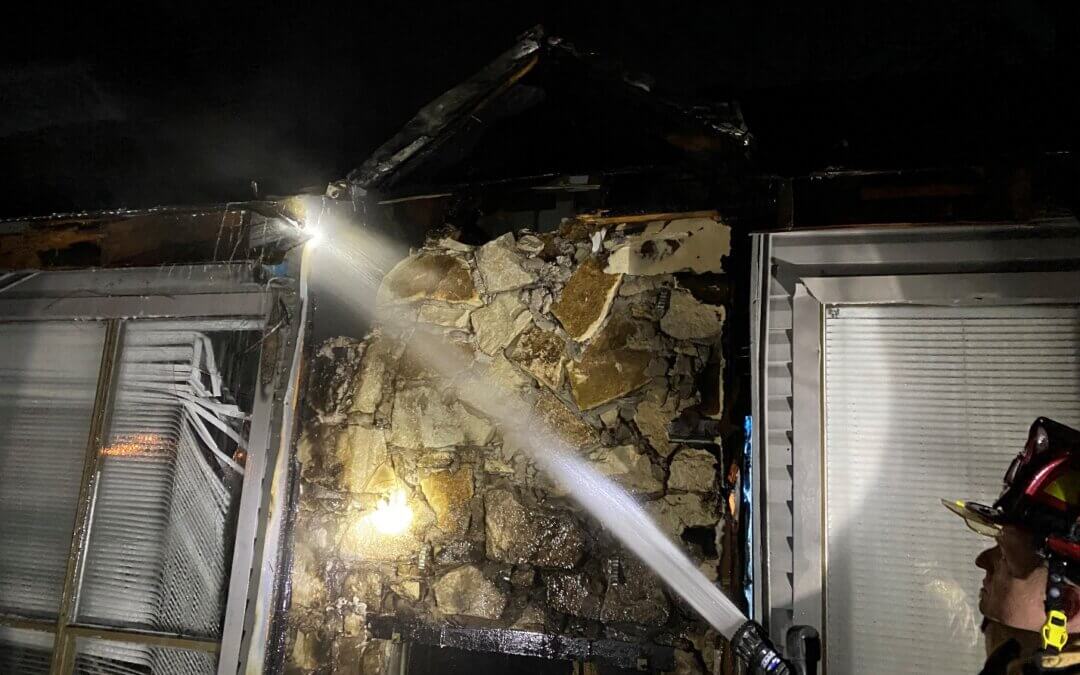Never Use Lighter Fluid Inside Your Home Fireplace
SPRING, TX – An ill-fated effort to light a fire in fireplace got the weekend off to a very eventful start Friday night for Spring Fire’s B-Shift crews.
“The use of charcoal lighter fluid to get wooden logs ignited went horribly wrong,” said District Chief Chris vonWiesenthal. “The lighter fluid spilled and leaked through a crack in a fireplace.”

The wooden framing supporting the chimney ignited but went unnoticed for a while. During this time the blaze spread inside the walls until breaking through the walls and roof at the rear of the house.




If you are using natural wood logs, make sure they are dry and not too large to light. Wet logs will smoke more than burn and the larger the surface of a log is the harder it will be to get it burning. Smaller logs or manufactured logs are typically easier to light than larger chunks of wood.
There are three safer options for starting a fire in a fireplace than resorting to pouring lighter fluid on wood.
(1) Take bark off the wood and set the bark in a pile on top of the wood and light the bark.
(2) Tie some sheets of newspaper in a knot. Place the knot on the stack of logs and light the paper.
(3) Purchase kindling or fire starters from the nearest grocery store and follow the directions on how much to use and how.
A multi-purpose long-neck wand lighter or a long fireplace match are what should be used to start either a manufactured fireplace log or a stack of wood and kindling inside a fireplace. If you are using manufactured logs, use one at time. Never light kindling in your hands first and then add it to the fire. And remember Gas Log Fireplaces are not designed to use either real wood or manufactured logs.
Lighter Fluid, whether specifically for charcoal briquettes or to refill lighters, should NEVER be directly used in a fireplace or anywhere indoors. Its vapor can ignite with explosive force and enter crevices you didn’t know existed and spread rapidly.
Lighter fluid may be fatal if swallowed or it enters the airways of humans or pets. If that occurs, stay calm. Do NOT induce vomiting or give anything by mouth. Get outside to fresh air, keep them warm and seek immediate medical assistance.
Eye protection, face protection and gloves are recommended anytime you use lighter fluid. If lighter fluid gets on your clothing, immediately remove the contaminated clothing. Then shower, or otherwise rinse your skin thoroughly, with soap and water. If it gets in your eyes, irrigate your eyes with large amounts of water for at least 15 minutes.
Lighter fluid should always be stored tightly sealed in a safe, approved container. It should be locked up in a cool, well-ventilated space away from any heat, acids, oxidizing agents, sparks, open flames and hot surfaces. It should never be used inside or while smoking cigarettes and must be disposed of per manufacturers’ instructions and federal and state regulations. Never pour it down a drain, into a watershed or storm sewer.
Putting safety first can prevent tragedies later.

